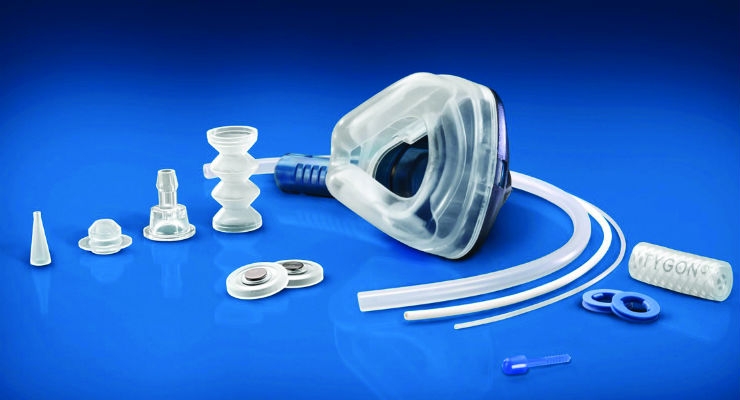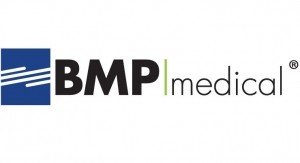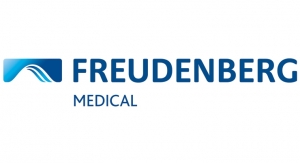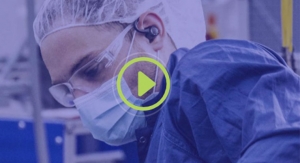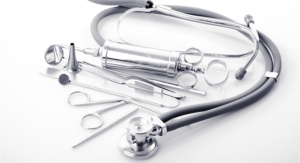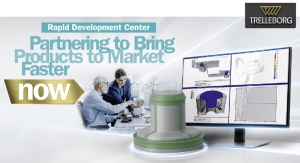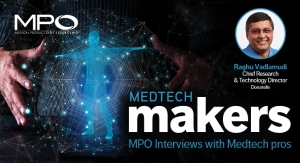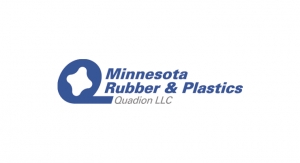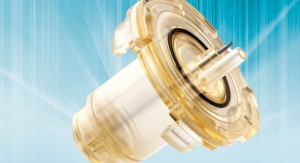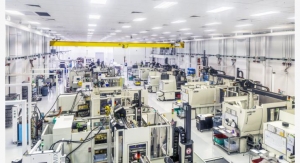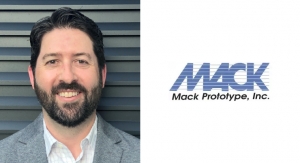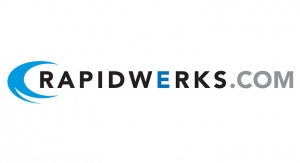Joyce Laird, Contributing Writer06.09.16
Per experts in the field, the medical molding market is in a constant state of flux. As such, molding providers keep up with these changes to stay ahead of what OEMs are seeking today and tomorrow. One clear area that is changing rapidly is the move to consolidate services. This alters the landscape from OEMs working with multiple, small contract shops to complete molding services. Simultaneously, some OEMs still prefer to work with services in their location, so many large molding service companies are answering this need by opening up more regional divisions.
Rather than focusing on only one or two aspects of the molding process, almost all medical molding service providers now work in partnership with their OEM customers. They provide any or all needed services—initial design, prototype development, guidance on DFM (design for manufacturing), material selection, and full production. This is a trend that simply makes good sense. Partnering is the path to success for both the OEMs and the molding service companies. The reasons for this become quite clear when taking a deeper look at the challenges that OEMs face if they want to stay in the top tier of their specific market area.
Additionally, it has become extremely important to be able to successfully manage all the elements surrounding the molding process from design to regulatory issues. This is hard to do cost effectively for OEMs, if dealing with multiple sources. Parts are becoming so small that many times, a full production run can be held in the palm of one hand. Along with miniaturization, many small parts contain a high level of complexity and require a molding supplier who is strong in two-shot, multi component, or electronically integrated parts. Mold prototyping has become more important and adding or removing a step in the process can both be cost reduction methods. It’s a tight juggling act that has to be absolutely perfect.
Matching Materials to Applications Bioabsorbables
A growing number of OEMs are consolidating their supplier base to add to the overall value chain. This is particularly true when looking at devices such as medical bioabosorbable stents, implantable staples, bioabsorbable micro-plugs, absorbable deployable anchors, and micro-screws. MTD Micro Molding, based in Charlton, Mass., specializes in micro molding of advanced medical products. Bioabsorbables make up about 60 percent of MTD’s business and the company is one of very few that can effectively mold these materials.
Dennis Tully, president, explained that this area is extremely specialized. “Maintaining consistent and minimal post-mold IV [inherent viscosity] loss through highly controlled material handling and processing is crucial to achieving success in bioabsorbable molding. The molding cell equipment in micro has to be much more capable to execute the job properly and for bioabsorbable molding, specialized drying systems are critical to molding success. Incorrect equipment and technology can result in excessive heat history, which causes extreme IV loss.”
“Materials subjected to the micro-molding process behave differently than those same materials subjected to a macromolding process. As a result, the variables in micro-molding are much more critical because of the nature of the geometry and the material. Process parameters need to be controlled at a much higher degree to create consistent product. The result is that micro-molding may look like ‘normal’ molding, but it is a very different process that requires closer precision molds and significantly higher process controls and capability. This is much more difficult to achieve in micro,” he said.
Silicones
The diverse needs of the medical device market create a continual demand for a wide range of materials. Because silicone is a thermoset material, which is very clean and pure, silicones in all their variety are widely used in the medical device area, in both molding and extrusion.
Headquartered in Solon, Ohio, Saint-Gobain Performance Plastics provides high-performance products and services for the life sciences market—molding, extrusion, and an all-encompassing custom fabrication for medical and biopharmaceutical customers. Silicone is its primary material but the company also works with thermoplastics and fluoropolymers. Rob Schwenker, medical components business manager, explained that silicone has some very unique physical properties. “It is used a lot in dynamic or functional applications, such as pump tubing, where flexibility and strength are needed at the same time. It resists compression, holds its shape, and can fit into many different applications. It’s perfect for devices that need repetitive compression, which is why it is used in peristaltic pumps. It returns to its shape very fast and consistently. It doesn’t fail under pressure.”
Schwenker added that because silicone is so important to Saint-Gobain, often the applications they have are slightly different than those a pure thermoplastic molder might see. “One of the trends we see that is exciting and growing is in the area of micro-molding. Molding silicone for this area is even more challenging than molding thermoplastic. The materials are a bit harder to manage; the precision required as far as the mold, design, and the management of the raw materials means we really have to control the inputs properly. The management of the product after molding is also critical.”
Combining Technologies
Today, there is a much higher emphasis on the end tooling; much more is incorporated into the tooling and molding itself. Mark Ostwald, vice president and general manager of Carpinteria, Calif.-based Freudenberg Medical, said that he sees this trend moving forward to incorporate secondary steps directly into the molding process or cycle. “Here is where design for manufacturability is key. All customers are aware of this and because of it, they are involving us earlier in their product development stages.”
“Also, innovation cycles are shrinking. Companies understand that time to market is critical. Being second always has a problem gaining market share. If you have an idea, you really have to look at the entire development chain and evaluate time to market. It comes down to how to come up with a good molding solution, and do it very quickly,” he added.
This combining of technologies also includes the integration of surface modifications such as coating during the molding cycle, which eliminates a secondary process and reduces time while simultaneously adding value to the products.
“UV curing of silicone became available and now we are looking for applications to best utilize the process. Micro-molding in general has been around for a very long time. Now we are more focused on how to mold these parts in an intelligent and efficient way, with better control, more yield, and less scrap,” Ostwald said.
Creating molds that meet the challenges of multiple technologies is being addressed by all molding companies. Felix Rozuk, director of sales and marketing for Marman Industries, based in La Verne, Calif., said that complete control of this phase of manufacturing gives his company the ability to create molds of the highest quality standards that meet the most challenging industry requirements. Two recent examples of specialized tooling for multiple material devices are an implant marker and dental implant surgical kit designed and produced at Marman.
The first is an instrument used to implant a marker at the biopsy site after a biopsy is taken. The dental kit is molded using polyphenylsulfone (PPSU) material. PPSU is ideal for applications that require repeated sterilizations and high mechanical strength.
“Once designs were finalized, molds were designed and built to manufacture the products in accordance to the customer’s specifications. Having these abilities in-house allows us complete control over the fabrication process and shortens the time from development to production. Engineered resin molded components were assembled under controlled conditions to ensure precise assembly. The plastic sub-assembly components were injection molded to very tight tolerances. Tensile testing was also performed to verify material strength. The final assembly was packaged and sealed in preparation for shipping to a sterilization provider and then shipped to the customer,” Rozuk explained.
Saint-Gobain also manufactures many extruded fluoropolymers that are used for the components in endoscopy and gastro-endoscopy applications. Schwenker said, “We often create custom, complex, and precise molded plastic components for medical devices. Some include containers for small measurement devices or filter housings. Many are thermoplastic. But very often, thermoplastic will incorporate other materials alongside of it so combined, it creates the finished product with a thermoplastic structure around it.
“Customers come to us with design ideas and we provide more input into the product design early. That is a definite step into eventually adding more components to any given design or device. In the past, we were primarily silicone; now we are molding silicone and thermoplastic parts together in a two-shot process. That opens the option of what else can we add to our process that will benefit our customers? Because so much of the functionality of medical components and devices comes in at the very early design stage, I can see this growing into adding electronics for more functionality into the overall molding processes. The only drawback is that silicone has a very high temperature molding process that may limit the addition of electronics at the early molding stages, but the way technology advances, there could be a solution to that challenge on the horizon. Micro-molding and incorporating multiple materials into one part will both continue to lead technology. We already do silicone over-molding.”
Of course every product innovation as noted here takes the circle back to the beginning, which is product design for manufacturability. The product needs to work and do what it is supposed to do, but it also needs to be suited for the type of manufacturing process it will need.
Robotics and Vision Systems
Incorporating technologies from other industries to create better micro-molding solutions is one of the keys to the continuing success of molding providers. Tully offered a good example, citing the integration of high end inspection systems into a molding cell. MTD Micro Molding can now actually measure features at high resolution. “We started with pixel counting and pattern-matching, but now camera systems are becoming much smarter. This is very important to us in the micro world and these systems enable us to do things we couldn’t do before. The cameras weren’t made for us but we learned how they could help us. In-line inspection capabilities provide 100 percent confidence that everything we produce is in specification, and if there are any rejects or suspect parts, they are properly segregated.”
All high tech camera systems in use at MTD are retrofitted to work well with micro-molding, as well as robotics. “None of the parts that we create are ever touched by human hands.
These parts are very small and most are very intricate. A robot will extract parts from the mold and carefully present them to a camera that will ensure the robot has safely removed the parts and the runner, then another camera inspects the parts to ensure that the most critical features are present and accurate. Then the robot will deliver the parts into the type of delivery or packaging system required. It is a highly involved process,” explained Tully.
Robotics are continually being streamlined. Ostwald noted that if you just eject a part out of the mold, it’s very difficult to grab it again, particularly with some very small part sizes. “If you want to put it into a package or need to assemble it in some way, say with a robot, then you need to initially remove it from the mold with a robot. Otherwise, you need to find a way to separate parts to feed into an assembly line, ” he said.
Schwenker added that, at Saint-Gobain, they believe the future lies in building work cells that can do multiple processes. “The rise in this type of automation is the future and also the automation of inspection to ensure quality assurance of all finished products.”
Changes in Outsourcing
A decade ago, most U.S. OEMs were shipping high volume work to international facilities, but now, that trend is reversing. One exception to this is the growing rise in contract manufacturing in Mexico. As countries like China become more advanced, labor rates are increasing. Add in the international cost of trade, and that is making Mexico look very viable for outsourcing. Some contract businesses may see this as a potential drain on revenue, but the top molding leaders consider this as just a new source of business. Mexico is opening a new market for well established U.S. molding and tooling providers. Mexico does not yet have the experience or depth to create precision tooling.
“At Marman, we capitalize on that. We offer customers who are taking production to Mexico a special contract on tooling that gives both sides benefits,” said Rozuk.
“But even as more OEM companies are moving their volume production molding to Mexico, they are still keeping their more difficult molding projects, prototypes, and of course, testing of new, final product assemblies and all the certifications they need to address in the U.S.A. We have established a presence with the medical cluster in Mexico. It is valuable to stay a part of this so we always know what is going on. We can keep a finger on the pulse of any shifts in the market,” he explained. “We are also providing Mexican molding companies with tooling support such as repairs, refurbishment, and new tool builds. You have to be willing to follow the industry, to change, or you will die. You may not always like the evolution of industry trends, but you have to embrace it.”
There will always be a need for both outsourced production and the detailed precision only top-tier service companies can provide. “As for the outsourcing trend, I see our customers want both quality and the regulatory addressed when outsourcing,” said Schwenker. “At Saint-Gobain, our customers don’t just want a product delivered to their doorstep, they want a validation that will stand up to FDA scrutiny. That is a trend that is changing the face of medical device molding today more than anything else. The need for precise documentation and validation is really important. We put a lot of investment into our regulatory and quality structure. That way, we can be true partners to our medical device OEMs.”
MedAccred
MedAccred is a growing, new watchdog for the medical device industry and the molding area is part of this. While not a mandated entity yet, an increasing number of medical device companies are actively participating in the MedAccred program. It is an industry managed, consensus-driven approach to ensuring critical manufacturing process quality throughout the medical device supply chain.
In today’s world of global manufacturing, the supply chain is often multi-tiered and geographically remote, making oversight challenging and costly. Gardner, Mass.-based Biomedical Polymers Inc. (BMP) has recently signed on to become one of the first injection molding and injection blow molding companies to become MedAccred certified. MedAccred, managed by the Performance Review Institute, is a non-profit organization driven to manage the critical manufacturing process of medical devices for all OEMs.
“The initial audit process is a stringent three-day review of the entire process, from work order through shipment of product with a heavy focus on the manufacturing process,” said Ed Kangas, vice president of sales and marketing at BMP Medical. “We view MedAccred as a key component in developing a more robust process at BMP Medical, thus allowing us to reduce the risk for our OEM partners.”
3D Printing
Although 3D printing has found success in many medical areas such as medical/surgical implants and orthopedic-type devices, the consensus from the medical molding area is that it is not ready. Most do see a future for the process, but at the moment view it as method to only create quick prototypes to help with initial designs. Two reasons for this are the continually shrinking size required from most molded components along with the extreme dimensional accuracy that is essential.
Ostwald notes that 3D printing can offer some help in the prototyping area, but added, “The truth is that engineers today don’t just want to have a 3D model that just looks like what they designed. They want to have it developed with the materials that they will use for actual production. However, a customer can come to us with a 3D model of a device along with their design backup and it can help us create an actual working model using the actual material.”
Rozuk said that he feels it is not competitive to the molding business yet. “Maybe it will be, but by the time that happens, all molding companies will have added the technology to their lines. We often get companies who come to us with a part they produced from their 3D printer who ask us if we can turn it into an injection moldable part. They still need a solid design for us to work off of, though. The 3D-created devices are currently good just for presentations, not for anything precision.”
On the other side of the coin, Schwenker said that at Saint-Gobain, they are excited about it, but with the caveat that it still isn’t advanced enough in flexible materials compared to rigid materials, so for the majority of their components, it is not a reality yet. “However, it is a very fast-changing industry, so as the 3D printing advances, no one can tell what may happen in the future,” he said.
Looking at the Future
With this much happening, future success will definitely rely on companies forming a strong partnership. Selecting the right molding manufacturer to be that partner is an important decision for the success of any program. Partnering with an experienced team that will help in the design and development is crucial to all types of molded medical devices. It pays to get it right from concept, prototype, material selection, and final design, through production to ensure a high-quality device, and get it to market quickly.
In this vein, all contributors to this feature have mapped out a future that will benefit all of their customers.
BMP Medical will be focusing its efforts in the Class 1 medical device and diagnostics area, while Freudenberg is expanding its technology base with a “buy and build” strategy and also expanding to provide more value-added services such as drug coatings and antimicrobials for more product functionality.
The highly skilled design and tooling engineers and mold makers at Marman Industries will continue to provide a strategic advantage for customers through the whole value chain, and MTD Micro Molding will be adding capabilities in the form of two, 20-ton Sodick molding presses with ancillary equipment to its existing ISO Class 8 cleanrooms this summer, including full automation and in-line inspection.
Saint-Gobain recently acquired a filtration technology company in China (medical, electrical, and industrial), which will allow the firm to add high-end thermoplastic molding with integral filter capabilities to its lineup.
The ongoing advances in high technology across all molding areas offer OEM customers the best of both worlds—the latest in technology and reliable partners that can deliver exactly what is needed to keep them first in their field.
Joyce Laird is an industrial freelance writer based in Los Angeles, Calif. While she writes across a wide range of industrial markets and topics, she has a long history of creating in-depth features that focus on the medical, pharmaceutical, and scientific markets. Contact her at jlcms@earthlink.net.
Rather than focusing on only one or two aspects of the molding process, almost all medical molding service providers now work in partnership with their OEM customers. They provide any or all needed services—initial design, prototype development, guidance on DFM (design for manufacturing), material selection, and full production. This is a trend that simply makes good sense. Partnering is the path to success for both the OEMs and the molding service companies. The reasons for this become quite clear when taking a deeper look at the challenges that OEMs face if they want to stay in the top tier of their specific market area.
Additionally, it has become extremely important to be able to successfully manage all the elements surrounding the molding process from design to regulatory issues. This is hard to do cost effectively for OEMs, if dealing with multiple sources. Parts are becoming so small that many times, a full production run can be held in the palm of one hand. Along with miniaturization, many small parts contain a high level of complexity and require a molding supplier who is strong in two-shot, multi component, or electronically integrated parts. Mold prototyping has become more important and adding or removing a step in the process can both be cost reduction methods. It’s a tight juggling act that has to be absolutely perfect.
Matching Materials to Applications Bioabsorbables
A growing number of OEMs are consolidating their supplier base to add to the overall value chain. This is particularly true when looking at devices such as medical bioabosorbable stents, implantable staples, bioabsorbable micro-plugs, absorbable deployable anchors, and micro-screws. MTD Micro Molding, based in Charlton, Mass., specializes in micro molding of advanced medical products. Bioabsorbables make up about 60 percent of MTD’s business and the company is one of very few that can effectively mold these materials.
Dennis Tully, president, explained that this area is extremely specialized. “Maintaining consistent and minimal post-mold IV [inherent viscosity] loss through highly controlled material handling and processing is crucial to achieving success in bioabsorbable molding. The molding cell equipment in micro has to be much more capable to execute the job properly and for bioabsorbable molding, specialized drying systems are critical to molding success. Incorrect equipment and technology can result in excessive heat history, which causes extreme IV loss.”
“Materials subjected to the micro-molding process behave differently than those same materials subjected to a macromolding process. As a result, the variables in micro-molding are much more critical because of the nature of the geometry and the material. Process parameters need to be controlled at a much higher degree to create consistent product. The result is that micro-molding may look like ‘normal’ molding, but it is a very different process that requires closer precision molds and significantly higher process controls and capability. This is much more difficult to achieve in micro,” he said.
Silicones
The diverse needs of the medical device market create a continual demand for a wide range of materials. Because silicone is a thermoset material, which is very clean and pure, silicones in all their variety are widely used in the medical device area, in both molding and extrusion.
Headquartered in Solon, Ohio, Saint-Gobain Performance Plastics provides high-performance products and services for the life sciences market—molding, extrusion, and an all-encompassing custom fabrication for medical and biopharmaceutical customers. Silicone is its primary material but the company also works with thermoplastics and fluoropolymers. Rob Schwenker, medical components business manager, explained that silicone has some very unique physical properties. “It is used a lot in dynamic or functional applications, such as pump tubing, where flexibility and strength are needed at the same time. It resists compression, holds its shape, and can fit into many different applications. It’s perfect for devices that need repetitive compression, which is why it is used in peristaltic pumps. It returns to its shape very fast and consistently. It doesn’t fail under pressure.”
Schwenker added that because silicone is so important to Saint-Gobain, often the applications they have are slightly different than those a pure thermoplastic molder might see. “One of the trends we see that is exciting and growing is in the area of micro-molding. Molding silicone for this area is even more challenging than molding thermoplastic. The materials are a bit harder to manage; the precision required as far as the mold, design, and the management of the raw materials means we really have to control the inputs properly. The management of the product after molding is also critical.”
Combining Technologies
Today, there is a much higher emphasis on the end tooling; much more is incorporated into the tooling and molding itself. Mark Ostwald, vice president and general manager of Carpinteria, Calif.-based Freudenberg Medical, said that he sees this trend moving forward to incorporate secondary steps directly into the molding process or cycle. “Here is where design for manufacturability is key. All customers are aware of this and because of it, they are involving us earlier in their product development stages.”
“Also, innovation cycles are shrinking. Companies understand that time to market is critical. Being second always has a problem gaining market share. If you have an idea, you really have to look at the entire development chain and evaluate time to market. It comes down to how to come up with a good molding solution, and do it very quickly,” he added.
This combining of technologies also includes the integration of surface modifications such as coating during the molding cycle, which eliminates a secondary process and reduces time while simultaneously adding value to the products.
“UV curing of silicone became available and now we are looking for applications to best utilize the process. Micro-molding in general has been around for a very long time. Now we are more focused on how to mold these parts in an intelligent and efficient way, with better control, more yield, and less scrap,” Ostwald said.
Creating molds that meet the challenges of multiple technologies is being addressed by all molding companies. Felix Rozuk, director of sales and marketing for Marman Industries, based in La Verne, Calif., said that complete control of this phase of manufacturing gives his company the ability to create molds of the highest quality standards that meet the most challenging industry requirements. Two recent examples of specialized tooling for multiple material devices are an implant marker and dental implant surgical kit designed and produced at Marman.
The first is an instrument used to implant a marker at the biopsy site after a biopsy is taken. The dental kit is molded using polyphenylsulfone (PPSU) material. PPSU is ideal for applications that require repeated sterilizations and high mechanical strength.
“Once designs were finalized, molds were designed and built to manufacture the products in accordance to the customer’s specifications. Having these abilities in-house allows us complete control over the fabrication process and shortens the time from development to production. Engineered resin molded components were assembled under controlled conditions to ensure precise assembly. The plastic sub-assembly components were injection molded to very tight tolerances. Tensile testing was also performed to verify material strength. The final assembly was packaged and sealed in preparation for shipping to a sterilization provider and then shipped to the customer,” Rozuk explained.
Saint-Gobain also manufactures many extruded fluoropolymers that are used for the components in endoscopy and gastro-endoscopy applications. Schwenker said, “We often create custom, complex, and precise molded plastic components for medical devices. Some include containers for small measurement devices or filter housings. Many are thermoplastic. But very often, thermoplastic will incorporate other materials alongside of it so combined, it creates the finished product with a thermoplastic structure around it.
“Customers come to us with design ideas and we provide more input into the product design early. That is a definite step into eventually adding more components to any given design or device. In the past, we were primarily silicone; now we are molding silicone and thermoplastic parts together in a two-shot process. That opens the option of what else can we add to our process that will benefit our customers? Because so much of the functionality of medical components and devices comes in at the very early design stage, I can see this growing into adding electronics for more functionality into the overall molding processes. The only drawback is that silicone has a very high temperature molding process that may limit the addition of electronics at the early molding stages, but the way technology advances, there could be a solution to that challenge on the horizon. Micro-molding and incorporating multiple materials into one part will both continue to lead technology. We already do silicone over-molding.”
Of course every product innovation as noted here takes the circle back to the beginning, which is product design for manufacturability. The product needs to work and do what it is supposed to do, but it also needs to be suited for the type of manufacturing process it will need.
Robotics and Vision Systems
Incorporating technologies from other industries to create better micro-molding solutions is one of the keys to the continuing success of molding providers. Tully offered a good example, citing the integration of high end inspection systems into a molding cell. MTD Micro Molding can now actually measure features at high resolution. “We started with pixel counting and pattern-matching, but now camera systems are becoming much smarter. This is very important to us in the micro world and these systems enable us to do things we couldn’t do before. The cameras weren’t made for us but we learned how they could help us. In-line inspection capabilities provide 100 percent confidence that everything we produce is in specification, and if there are any rejects or suspect parts, they are properly segregated.”
All high tech camera systems in use at MTD are retrofitted to work well with micro-molding, as well as robotics. “None of the parts that we create are ever touched by human hands.
These parts are very small and most are very intricate. A robot will extract parts from the mold and carefully present them to a camera that will ensure the robot has safely removed the parts and the runner, then another camera inspects the parts to ensure that the most critical features are present and accurate. Then the robot will deliver the parts into the type of delivery or packaging system required. It is a highly involved process,” explained Tully.
Robotics are continually being streamlined. Ostwald noted that if you just eject a part out of the mold, it’s very difficult to grab it again, particularly with some very small part sizes. “If you want to put it into a package or need to assemble it in some way, say with a robot, then you need to initially remove it from the mold with a robot. Otherwise, you need to find a way to separate parts to feed into an assembly line, ” he said.
Schwenker added that, at Saint-Gobain, they believe the future lies in building work cells that can do multiple processes. “The rise in this type of automation is the future and also the automation of inspection to ensure quality assurance of all finished products.”
Changes in Outsourcing
A decade ago, most U.S. OEMs were shipping high volume work to international facilities, but now, that trend is reversing. One exception to this is the growing rise in contract manufacturing in Mexico. As countries like China become more advanced, labor rates are increasing. Add in the international cost of trade, and that is making Mexico look very viable for outsourcing. Some contract businesses may see this as a potential drain on revenue, but the top molding leaders consider this as just a new source of business. Mexico is opening a new market for well established U.S. molding and tooling providers. Mexico does not yet have the experience or depth to create precision tooling.
“At Marman, we capitalize on that. We offer customers who are taking production to Mexico a special contract on tooling that gives both sides benefits,” said Rozuk.
“But even as more OEM companies are moving their volume production molding to Mexico, they are still keeping their more difficult molding projects, prototypes, and of course, testing of new, final product assemblies and all the certifications they need to address in the U.S.A. We have established a presence with the medical cluster in Mexico. It is valuable to stay a part of this so we always know what is going on. We can keep a finger on the pulse of any shifts in the market,” he explained. “We are also providing Mexican molding companies with tooling support such as repairs, refurbishment, and new tool builds. You have to be willing to follow the industry, to change, or you will die. You may not always like the evolution of industry trends, but you have to embrace it.”
There will always be a need for both outsourced production and the detailed precision only top-tier service companies can provide. “As for the outsourcing trend, I see our customers want both quality and the regulatory addressed when outsourcing,” said Schwenker. “At Saint-Gobain, our customers don’t just want a product delivered to their doorstep, they want a validation that will stand up to FDA scrutiny. That is a trend that is changing the face of medical device molding today more than anything else. The need for precise documentation and validation is really important. We put a lot of investment into our regulatory and quality structure. That way, we can be true partners to our medical device OEMs.”
MedAccred
MedAccred is a growing, new watchdog for the medical device industry and the molding area is part of this. While not a mandated entity yet, an increasing number of medical device companies are actively participating in the MedAccred program. It is an industry managed, consensus-driven approach to ensuring critical manufacturing process quality throughout the medical device supply chain.
In today’s world of global manufacturing, the supply chain is often multi-tiered and geographically remote, making oversight challenging and costly. Gardner, Mass.-based Biomedical Polymers Inc. (BMP) has recently signed on to become one of the first injection molding and injection blow molding companies to become MedAccred certified. MedAccred, managed by the Performance Review Institute, is a non-profit organization driven to manage the critical manufacturing process of medical devices for all OEMs.
“The initial audit process is a stringent three-day review of the entire process, from work order through shipment of product with a heavy focus on the manufacturing process,” said Ed Kangas, vice president of sales and marketing at BMP Medical. “We view MedAccred as a key component in developing a more robust process at BMP Medical, thus allowing us to reduce the risk for our OEM partners.”
3D Printing
Although 3D printing has found success in many medical areas such as medical/surgical implants and orthopedic-type devices, the consensus from the medical molding area is that it is not ready. Most do see a future for the process, but at the moment view it as method to only create quick prototypes to help with initial designs. Two reasons for this are the continually shrinking size required from most molded components along with the extreme dimensional accuracy that is essential.
Ostwald notes that 3D printing can offer some help in the prototyping area, but added, “The truth is that engineers today don’t just want to have a 3D model that just looks like what they designed. They want to have it developed with the materials that they will use for actual production. However, a customer can come to us with a 3D model of a device along with their design backup and it can help us create an actual working model using the actual material.”
Rozuk said that he feels it is not competitive to the molding business yet. “Maybe it will be, but by the time that happens, all molding companies will have added the technology to their lines. We often get companies who come to us with a part they produced from their 3D printer who ask us if we can turn it into an injection moldable part. They still need a solid design for us to work off of, though. The 3D-created devices are currently good just for presentations, not for anything precision.”
On the other side of the coin, Schwenker said that at Saint-Gobain, they are excited about it, but with the caveat that it still isn’t advanced enough in flexible materials compared to rigid materials, so for the majority of their components, it is not a reality yet. “However, it is a very fast-changing industry, so as the 3D printing advances, no one can tell what may happen in the future,” he said.
Looking at the Future
With this much happening, future success will definitely rely on companies forming a strong partnership. Selecting the right molding manufacturer to be that partner is an important decision for the success of any program. Partnering with an experienced team that will help in the design and development is crucial to all types of molded medical devices. It pays to get it right from concept, prototype, material selection, and final design, through production to ensure a high-quality device, and get it to market quickly.
In this vein, all contributors to this feature have mapped out a future that will benefit all of their customers.
BMP Medical will be focusing its efforts in the Class 1 medical device and diagnostics area, while Freudenberg is expanding its technology base with a “buy and build” strategy and also expanding to provide more value-added services such as drug coatings and antimicrobials for more product functionality.
The highly skilled design and tooling engineers and mold makers at Marman Industries will continue to provide a strategic advantage for customers through the whole value chain, and MTD Micro Molding will be adding capabilities in the form of two, 20-ton Sodick molding presses with ancillary equipment to its existing ISO Class 8 cleanrooms this summer, including full automation and in-line inspection.
Saint-Gobain recently acquired a filtration technology company in China (medical, electrical, and industrial), which will allow the firm to add high-end thermoplastic molding with integral filter capabilities to its lineup.
The ongoing advances in high technology across all molding areas offer OEM customers the best of both worlds—the latest in technology and reliable partners that can deliver exactly what is needed to keep them first in their field.
Joyce Laird is an industrial freelance writer based in Los Angeles, Calif. While she writes across a wide range of industrial markets and topics, she has a long history of creating in-depth features that focus on the medical, pharmaceutical, and scientific markets. Contact her at jlcms@earthlink.net.

